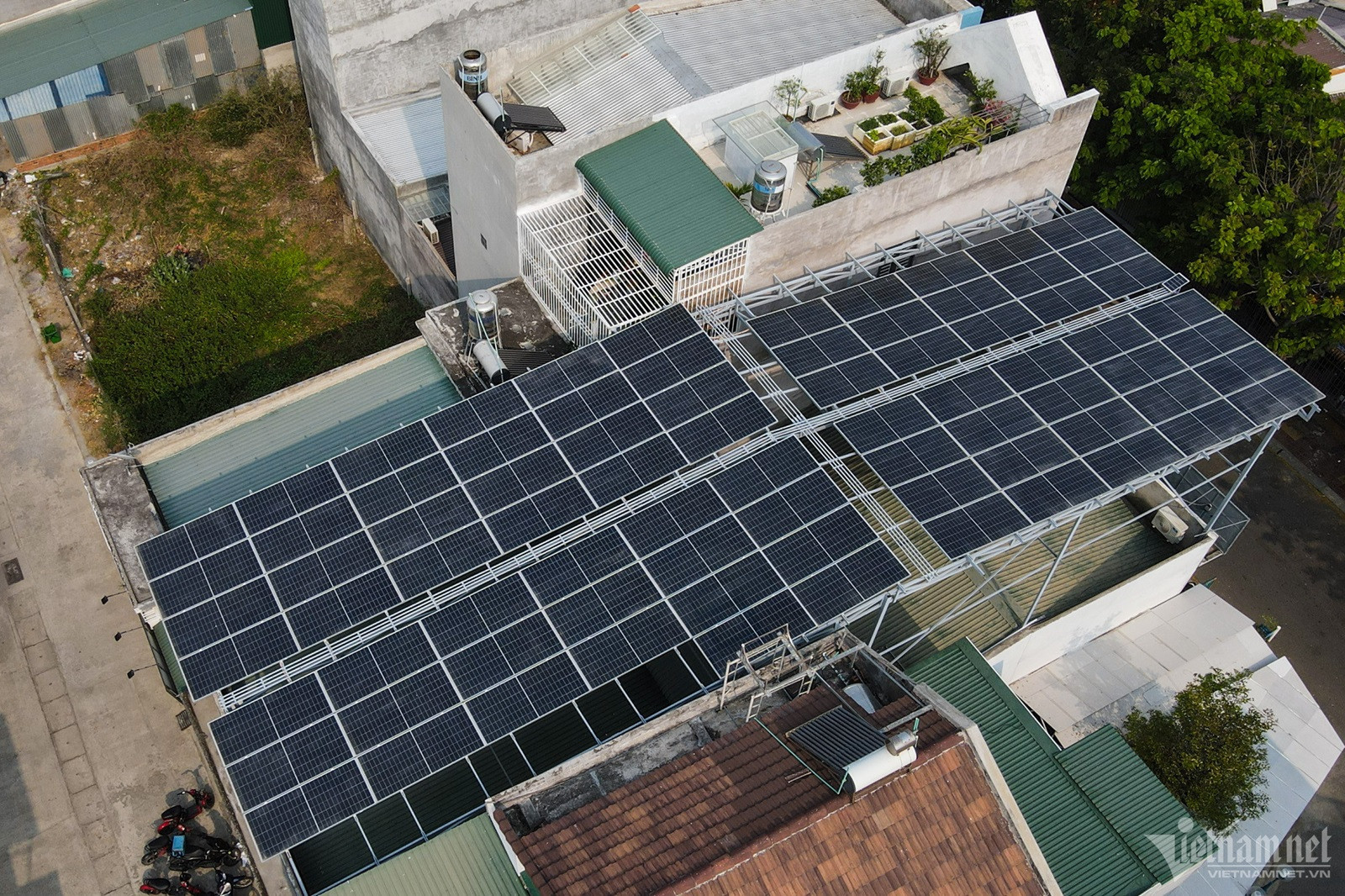
At the seminar "Clean Energy and Solutions to Reduce Electricity Costs for People and Businesses," held by Nguoi Lao Dong newspaper on April 10 in HCM City, Luu Manh Thuc, General Director of SPC Solar Energy JSC, said households should determine their monthly kWh usage before deciding whether to install rooftop solar power systems.
Thuc noted that an average HCM City household pays VND1.2-1.5 million monthly for electricity. An optimal solution could be installing a system generating 600-720 kWh monthly.
"With such output, you could recover over VND1 million in electricity costs monthly. The cost to install a suitable system with storage batteries is around VND60 million, with a payback period of 4-5 years," Thuc said.
He believes clean energy is an effective solution helping businesses and households save 50-60 percent on electricity costs, especially during peak hours when demand spikes.
Phan Ngoc Anh, Director of Alena Energy, said the market now offers US-made products that convert DC from solar panels to AC directly on the panel.
For manufacturing businesses, storage battery products with capacities from 230 kWh to 2.3 MWh can integrate into existing systems, charging during off-peak hours for use during peak times.
Anh added that previously businesses installed solar systems for self-use and sold excess power to EVN at about VND2,000/kWh. Now, using solar power with storage saves costs, with a 4-5-year payback.
Regarding the legal frameworks for rooftop solar development, Dinh Hong Ky, Vice Chair of the HCM City Business Association (HUBA), said Decree 58 is a "lifeline" for businesses. However, under current regulations, rooftop solar power installers have to seek approval from the Department of Industry and Trade for works with a capacity of 1MW and higher. This costs time and money.
Some businesses and providers "bypass" this by splitting one large project into smaller projects with a capacity of below 1 MW to simplify licensing, an issue needing review and adjustment, Ky said.
Peak-hour pricing
According to Nguyen Quoc Dung, Head of Electricity of Vietnam’s (EVN) Business Division, electricity is distributed on a ‘supply-as-needed’ principle.
When societal demand surges, EVN will have to use high-cost electricity sources, up to VND4,000-5,000/kWh. This directly raises the overall costs. Therefore, solar power is a good choice as this lets businesses and households self-supply, cutting bills and easing grid pressure.
"For households, the clearest benefit is cost savings. For the 401st and subsequent kwh, consumers have to pay over VND3,000 per kwh. Rooftop solar can significantly slash monthly bills," Dung shared.
For businesses, he said rooftop solar cuts production costs and saves energy long-term, boosting stability and product competitiveness.
On rooftop solar effectiveness, Bui Trung Kien, Deputy General Director of HCM City Power Corporation (EVNHCMC), said households can use appliances freely yet still save money.
Statistics show that before rooftop solar was promoted in 2021, EVNHCMC managed over 14,000 systems with a total capacity of 350 MWp. Now, with Decree 135, and most recently Decree 58 (which took effect on March 3, 2025), many households and businesses have resumed installations.
This decree stipulates that projects using renewable energy sources with installed electricity storage systems and connected to the national grid are prioritized for mobilization during the power system’s peak hours as regulated, except for self-produced, self-consumed electricity.
Nearly 500 major customers have registered for rooftop solar, totaling 46 MWp. Soon, industrial park factories will join, likely boosting HCM City’s solar output significantly.
In reality, energy expert Ha Dang Son noted that rooftop solar output varies with weather. Therefore, if installing rooftop solar power, households should think of backup plans, often via national grid connection.
Currently, excess solar power can only be sold to the grid at 10-20 percent of total capacity. Authorities should consider raising this above 20 percent to encourage clean energy investment.
Another solution is letting businesses collaborate with the power sector, paying extra operating costs as a subscription. The sector would manage backup capacity, while businesses could sell more power to the grid.
Son suggested that instead of a fixed rate, a two-tier pricing mechanism—separating peak and normal hours—should be built. Also, an Environmental Protection Fund could support renewable projects, especially wind power, to drive sustainable, effective growth.
Binh Minh